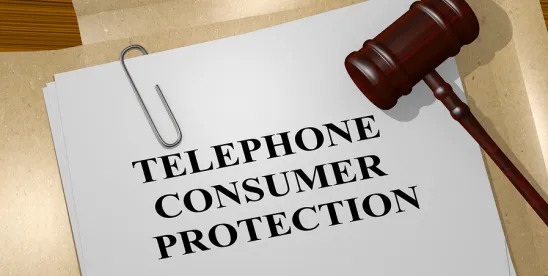In Allan v. Pennsylvania Higher Education Assistance Agency, the plaintiffs alleged that they “received unwanted calls to their cell phones from [the] Pennsylvania Higher Education Assistance Agency (“PHEAA”) regarding their student-loan debt,” in violation of the Telephone Consumer Protection Act (“TCPA”). No. 19-2043, 2020 U.S. App. LEXIS 23935 (6th Cir. July 29, 2020). The “autodialer system that PHEAA use[d] to make collection-related calls” could only dial numbers from a stored list; it could not generate numbers randomly.
The TCPA prohibits the use of an automatic telephone dialing system (“ATDS”) to make unconsented-to calls or texts. 47 U.S.C. § 227(b)(1). It defines an ATDS as “equipment which has the capacity — (A) to store or produce telephone numbers to be called, using a random or sequential number generator; and (B) to dial such numbers.” Id. at § 227(a). Despite the plain requirements of this definition, the circuit courts have split as to whether a device must have the capacity to randomly or sequentially generate numbers in order to be considered an ATDS. Compare Marks v. Crunch San Diego, LLC, 904 F.3d 1041, 1052 (9th Cir. 2018) (finding that stored-number systems are ATDS); Duran v. La Boom Disco, Inc., 955 F.3d 279 (2d Cir. Apr. 7, 2020) (same); with Gadelhak v. AT&T Servs., Inc., 950 F.3d 458, 460 (7th Cir. 2020) (finding that stored-number systems without the ability to randomly or sequentially generate numbers are not ATDS); Glasser v. Hilton Grand Vacations Co., 948 F.3d 1301, 1304-05 (11th Cir. 2020) (same). The source of this discord appears to be the desire to expand the reaches of the TCPA.
In siding with the Second and Ninth Circuits, the Sixth Circuit examined three issues: (1) the purported ambiguity in the autodialer definition, (2) the context of the autodialer ban, and (3) legislative history. As to the first, the court found that the definition of ATDS is ambiguous because if you follow proper grammar and require that the ATDS be able to randomly or sequentially generate numbers, the meaning of the word “store” becomes somewhat strained. 2020 U.S. App. LEXIS 23935 at *9-13. But if you dispose of the last antecedent rule, the only way to make sense of the definition is by adding words to it, which is an impermissible resolution. Id. Rejecting all readings as nonsensical and contrary to cannons of statutory construction, the court deemed the definition “ambiguous on its face.” Id. As some commentators have noted, though, the court overlooked another reading under which the definition of ATDS encompasses multi-component systems in which one device produces random numbers and the other stores and dials them. The use of the word “or” between “store” and “produce” is intended to convey that such multi-component systems are not a permissible work around.
In looking at the “larger context” of the TCPA, the Sixth Circuit reasoned that the TCPA’s exceptions for consented-to calls naturally contemplated that people would voluntarily provide their numbers, which would then be stored in a calling device. Likewise, before the government-debt-collector exception was struck down as unconstitutional, courts noted that calls made to “collect on a debt are calls made to known recipients.” Id. at *17-18. “[T]he only way this exception [for calls made by government-debt collectors] makes sense is if an ATDS can make calls … using a human-generated list of phone numbers” for purposes of targeting known debtors. Id. Thus, the Sixth Circuit reasoned, the context of the TCPA confirms that Congress intended an ATDS to include machines that only store and cannot randomly generate numbers.
Finally, the Sixth Circuit concluded that the legislative history of the TCPA indicated “that Congress intended to crack down on automated calls themselves — not just the technology making them possible at the time.” Id. at *20. It also dismissed the notion that its holding would render everyday use of smart phones subject to the TCPA because courts have held that a device is only an ATDS “if it actually is used in the way prescribed by statute.” Id.
In sum, because the court found that it was “impossible to draw any reliable conclusion from a plain text reading of the autodialer definition itself,” it had to rely on the “larger context of the autodialer ban” and its related provisions to interpret its scope. It therefore read the definition of ATDS as follows:
An ATDS is “equipment which has the capacity —
(A) to store [telephone numbers to be called];
or produce telephone numbers to be called, using a random or sequential number generator; and
(B) to dial such numbers.”
Id. at *27-28.
Notably, the dissent argued that “Congress defined an ATDS as ‘equipment which has the capacity [] (A) to store or produce telephone numbers to be called, using a random or sequential number generator; and (B) to dial such numbers.’ In that case, the modifier describes ‘a quality of the numbers an ATDS must have the capacity to store or produce[,]’ specifically ‘the process by which those numbers are generated in the first place.’” Id. at *30. The dissent preferred that reading as it was both grammatically correct and did not require a significant rewrite of the statute. Id.
The Supreme Court is expected to resolve the circuit split over whether an ATDS must randomly generate numbers when it decides Facebook Inc. v. Duguid, a case arising from the 9th Circuit. Briefing is currently scheduled through October 2020.





 />i
/>i

